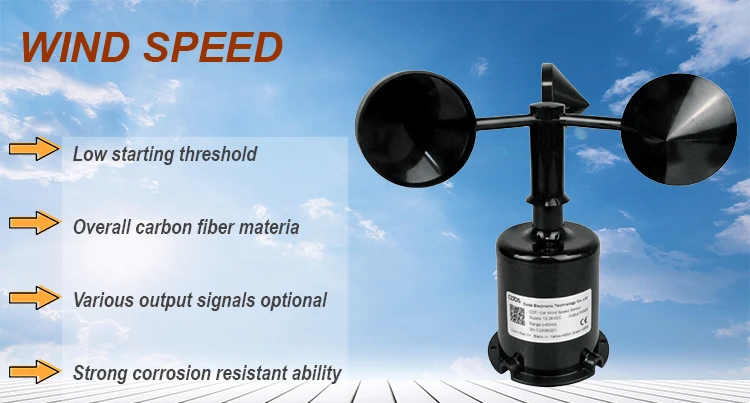
# Anemometer: Instrument for Measuring Wind Speed
## What is an Anemometer?
An anemometer is a meteorological instrument specifically designed to measure wind speed. This essential tool plays a crucial role in weather forecasting, aviation, marine operations, and various scientific research applications. The word “anemometer” comes from the Greek word “anemos,” meaning wind, and “metron,” meaning measure.
## Types of Anemometers
### 1. Cup Anemometer
The most common type features three or four hemispherical cups mounted on horizontal arms that rotate with the wind. The rotation speed is proportional to wind velocity.
### 2. Vane Anemometer
Also known as propeller anemometers, these combine a wind vane with a propeller to measure both wind speed and direction simultaneously.
### 3. Hot-Wire Anemometer
Using electrically heated wires, these instruments measure wind speed by detecting how quickly the wind cools the wire.
### 4. Ultrasonic Anemometer
This advanced type uses ultrasonic sound waves to measure wind speed and direction without moving parts.
### 5. Laser Doppler Anemometer
Employing laser technology, these sophisticated instruments measure the Doppler shift of light scattered by moving air particles.
## How Anemometers Work
The basic principle behind most anemometers involves converting wind energy into measurable mechanical or electrical signals. For example:
- Cup anemometers count rotations per time period
- Vane anemometers measure propeller rotation speed
- Hot-wire models track electrical resistance changes
- Ultrasonic versions time sound wave transmission
## Applications of Anemometers
Weather Forecasting
Meteorologists rely on anemometers to provide accurate wind speed data for weather predictions and storm tracking.
Aviation
Airports use anemometers to monitor wind conditions critical for safe takeoffs and landings.
Wind Energy
Wind farms utilize anemometers to assess potential sites and optimize turbine performance.
Building Design
Architects and engineers use wind measurements to design structures that can withstand local wind conditions.
Environmental Research
Scientists employ anemometers in climate studies and pollution dispersion research.
## Choosing the Right Anemometer
When selecting an anemometer, consider these factors:
- Measurement range needed
- Accuracy requirements
- Environmental conditions
- Data recording capabilities
- Power source and portability
- Budget constraints
## Maintenance and Calibration
To ensure accurate measurements, anemometers require regular maintenance:
- Clean moving parts to prevent debris buildup
- Check for wear and tear on mechanical components
- Verify calibration against known standards
- Protect from extreme weather when not in use
- Follow manufacturer’s maintenance schedule
## The Future of Wind Measurement
Advancements in sensor technology and data processing continue to improve anemometer design. Modern instruments now offer wireless connectivity, real-time data analysis, and integration with other environmental monitoring systems. As renewable energy grows in importance, the role of accurate wind measurement becomes increasingly vital to our sustainable future.
Keyword: instrument measure wind speed